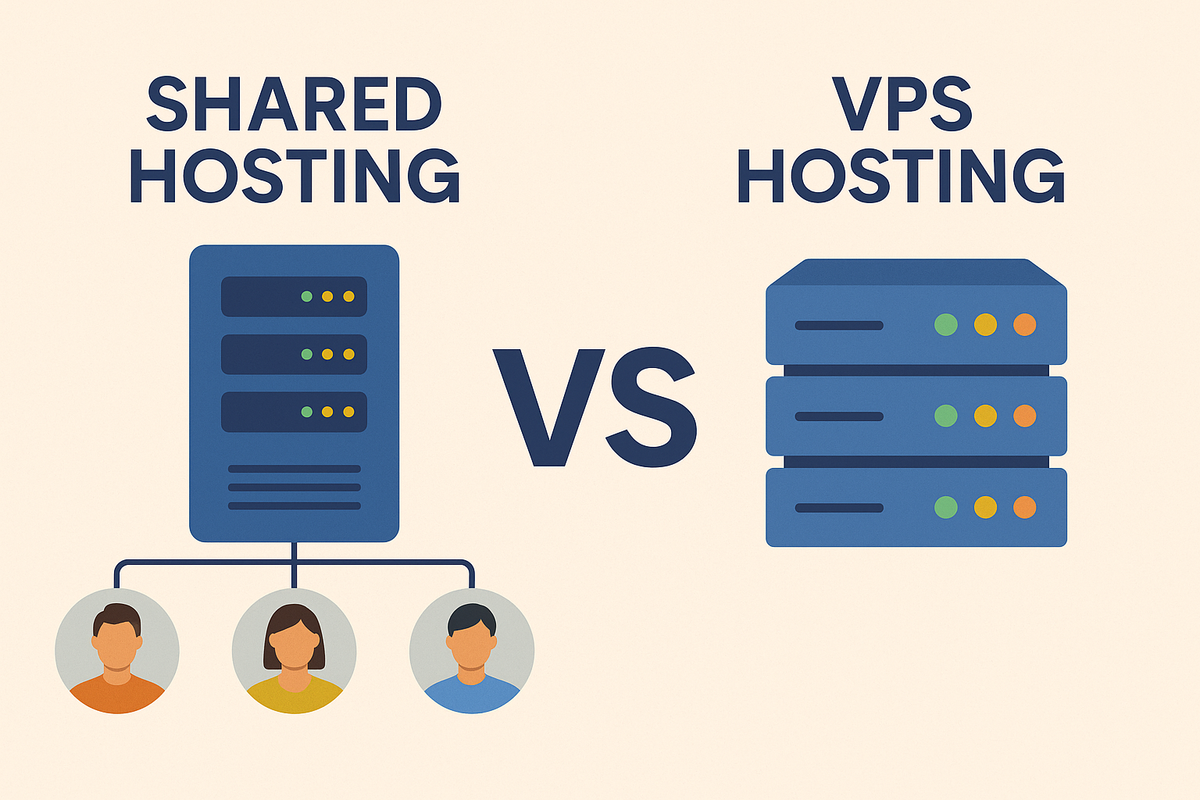Shared vs. VPS Hosting: Pros and Cons

When you start researching web hosting, you’ll quickly run into two terms that sound a bit technical: shared hosting and VPS hosting. They’re two of the most common options for people launching websites, and both come with their own set of promises.
But what do those terms actually mean in plain English? And how do you decide which one is right for you?
Let’s unpack the differences in a way that makes sense, using real-world analogies and honest pros and cons.
Shared Hosting: Living in the Apartment Building
Think of shared hosting as renting a room in a big apartment building. You have your own little space, but you share the plumbing, electricity, and internet with everyone else in the building.
That’s how shared hosting works. Dozens (sometimes hundreds) of websites live on the same server, all drawing from the same resources. The biggest advantage is price. Shared hosting is usually the cheapest way to get a website online, which is why it’s the go-to choice for beginners.
The downside, though, is that your neighbors matter. If one site on the server suddenly gets a surge of traffic or starts using too much power, everyone else feels the slowdown. Security can also be more of a concern, since a weakness in one site could, in theory, affect others.
In short: Shared hosting is cheap, simple, and enough for small blogs, portfolios, or hobby sites. But it has its limits.
VPS Hosting: Your Own Townhouse
Now imagine instead of a single apartment in a giant building, you have a townhouse. You still share the land with other homes, but your space is clearly divided and more private.
That’s VPS hosting (Virtual Private Server). Technically, you’re still on a server with other websites, but the server is divided into separate “virtual” sections. Each section gets its own share of resources that no one else can touch.
This gives you more speed, more reliability, and more control compared to shared hosting. If your website grows — maybe you’re running an online store or a busy blog — VPS is often the natural next step.
The catch? VPS hosting costs more than shared hosting, and it requires a little more comfort with technical setups (though many providers now make it easier with managed VPS plans).
In short: VPS is for people who want better performance and stability, and who are ready to pay a bit more for it.
Weighing the Pros and Cons
Let’s strip it down to the essentials.
Shared Hosting Pros:
- Very affordable (great for beginners).
- Easy to set up with one-click WordPress installs.
- Perfect for small, low-traffic sites.
Shared Hosting Cons:
- Slower performance when neighbors hog resources.
- Less secure (more sites on one server).
- Limited customization and growth.
VPS Hosting Pros:
- Dedicated resources = faster and more stable.
- Greater flexibility and control over your environment.
- Better scalability for growing websites.
VPS Hosting Cons:
- Higher cost compared to shared hosting.
- Can be more technical (unless you choose managed VPS).
Which One Should You Choose?
The choice between shared and VPS hosting comes down to where you are on your journey.
If you’re starting a personal blog, building a small business site, or just experimenting with your first website, shared hosting is the logical choice. It’s cheap, it’s simple, and it gives you everything you need to get started.
But if you already know you’ll need more — maybe you expect a lot of traffic, or you want your site to feel professional and fast from day one — then VPS hosting is worth the extra investment. It gives you more breathing room and more control, without jumping all the way to expensive dedicated hosting.
At the end of the day, both shared and VPS hosting serve the same basic purpose: they get your website online. The difference is how much space, control, and reliability you want right now.
Shared hosting is like dipping your toes into the water — it’s the cheapest way to start and see if your idea works. VPS hosting is the next step, giving you more serious resources when you’re ready to grow.
There’s no wrong answer here. The best choice is the one that matches your needs today, knowing that you can always upgrade later as your site (and your confidence) grows.